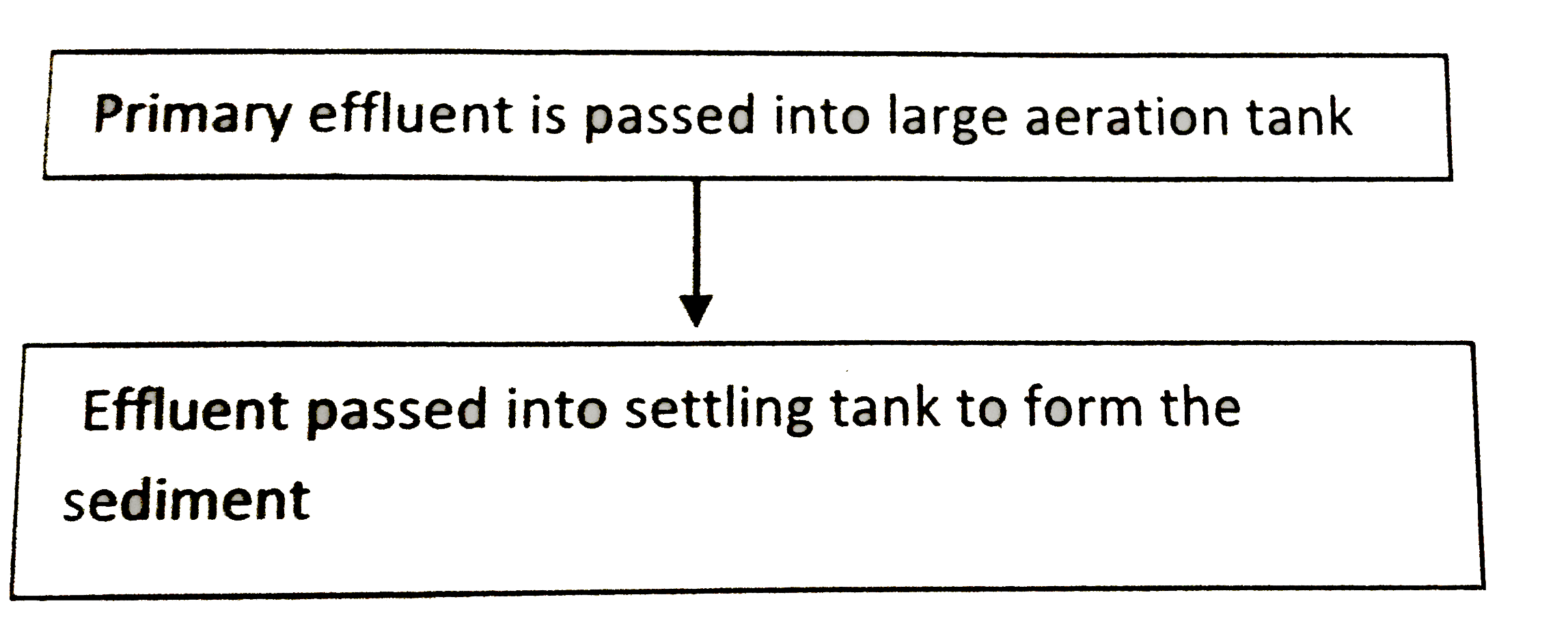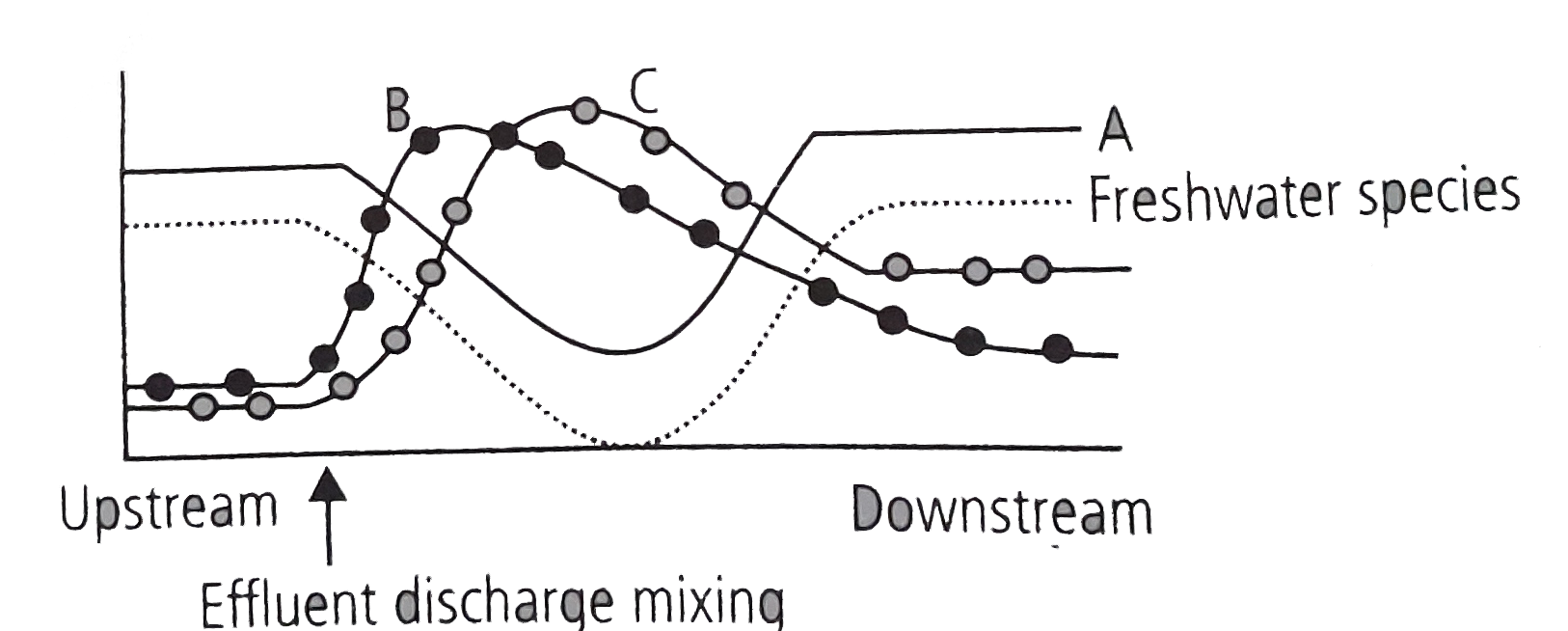Passage of effluents into oxidation tank is for
Primary treatment
Secondary treatment
Tertiary treatment
Both A and B
The correct Answer is:B
Step-by-Step Solution:
1. Understanding Effluents: Effluents are liquid waste materials that are discharged into the environment, typically from industrial processes or sewage treatment plants.
2. Sewage Treatment Process: The sewage treatment process is divided into three main stages:
- Primary Treatment: This involves the physical separation of solids from liquids. During this stage, solid waste settles at the bottom, forming sludge, while the liquid portion, known as effluent, remains on top.
- Secondary Treatment: This stage focuses on biological processes to further treat the effluent. The effluent from the primary treatment is passed into an aeration tank or oxidation tank, where microorganisms break down organic matter.
- Tertiary Treatment: This is the final stage, which involves advanced treatment processes to remove remaining impurities and contaminants from the effluent.
3. Role of the Oxidation Tank: The oxidation tank, also referred to as the aeration tank, is specifically designed for secondary treatment. Here, the effluent is aerated to promote the growth of aerobic bacteria, which consume organic pollutants, thereby purifying the water.
4. Conclusion: The passage of effluents into the oxidation tank is primarily for secondary treatment, where biological processes are employed to further reduce the organic load and improve water quality before it is discharged or subjected to tertiary treatment.
Final Answer:
The passage of effluents into the oxidation tank is for secondary treatment.
---
- Primary Treatment: This involves the physical separation of solids from liquids. During this stage, solid waste settles at the bottom, forming sludge, while the liquid portion, known as effluent, remains on top.
- Secondary Treatment: This stage focuses on biological processes to further treat the effluent. The effluent from the primary treatment is passed into an aeration tank or oxidation tank, where microorganisms break down organic matter.
- Tertiary Treatment: This is the final stage, which involves advanced treatment processes to remove remaining impurities and contaminants from the effluent.
The passage of effluents into the oxidation tank is for secondary treatment.
Topper's Solved these Questions
- BOOK - DINESH PUBLICATION ENGLISHCHAPTER - MICROBES IN HUMAN WELFAREEXERCISE - RQ257videos
MICROBES IN HUMAN WELFARE
- BOOK - DINESH PUBLICATION ENGLISHCHAPTER - MICROBES IN HUMAN WELFAREEXERCISE - CYG16videos
MICROBES IN HUMAN WELFARE
- BOOK - DINESH PUBLICATION ENGLISHCHAPTER - MAMMALIA [MAMMA - BREAST]EXERCISE - Brain Teasers - I100videos
MAMMALIA [MAMMA - BREAST]
- BOOK - DINESH PUBLICATION ENGLISHCHAPTER - MOLECULES OF THE CELLEXERCISE - CYG43videos
MOLECULES OF THE CELL
Similar Questions
Given below are the steps involved in sewage treatment. Arrange them in proper sequence and select the correct option.
A. Passage of primary effluent into large aeration tanks for mechanical agitation and pumping of air.
B. Passage of secondary effluent and formation of activated sludge.
C. Physical removal of particles through filtration and sedimentation
D. Release of effluent from the secondary treatment plant into natural water bodies.
E. Growth of useful aerobic microbes into flocs which significantly reduce the BOD.View SolutionLarge quantities of sewage is generated everyday in cities and towns, which is treated in Sewage Treatment Plants (STPs) to make it less polluted. Given below is the flow diagram of one of the stages of STP.
Observe the given flow diagram and answer the questions accordingly

(a) Why primary effluent is passed into large aeration tanks?
(b) Write the technical term used for the sediment formed? Mention its significance
(c) Explain the final step that results in the formation of biogas in the large tank before the treated effluent is released into water bodies.View Solution
Knowledge Check
- Question 1 - Select One
The passage relates to :
AbusinessBresearch & developmentCtechnology transferDmarket awareness - Question 2 - Select One
The graph given below represents changes in different ecological parameters due to effluent mixing in a stream. The three lines A, B anc C represent
 AA: oxygen concentration
AA: oxygen concentration
B: biological O2 demand
C: pollution resistant speciesBA: pollutan
B: aerobic process
C: anaerobic processCA: oxygen concentration
B: CO2 concentration
C: termperatureDA: phosphate concentration
B: nitrate concentration
C: rate of photosynthesis.
Green algae associated with oxidation tanks are
View SolutionPhotocatalysis of effluents is carried out with the help of
View SolutionExplain the three steps involved in the treatment of municipal waste water in effluent treatment plant prior to its disposal.
View SolutionA convex lens is held 45cm above the bottom of an empty tank. The image of a point at the bottom of a tank is formed 36cm above the lens. Now, a liquid is poured into the tank to a depth of 40cm. It is found that the distance of the image of the same point on the bottom of the tank is 48cm above the lens. Find the refractive index of the liquid.
View SolutionWhat is the function of aeration tank in sewage treatment?
View SolutionT=R2r2√2hg
Suppose an open cylindrical tank has a round drain with radius t in the bottom of the tank. When the tank is filled with water to a depth of h centimeters, the time it takes for all the water to drain from the tank is given by the formula above, where R is the radius of the tank (in centimeters) and g=980cm/s2 is the acceleration due to gravity. Suppose such a tank has a radius of 2 meters and is filled to a depth of 4 meters. About how many minutes does it take to empty the tank if the drain has a radius of 5 centimeters? (1 meter=100 centimeter).View Solution

